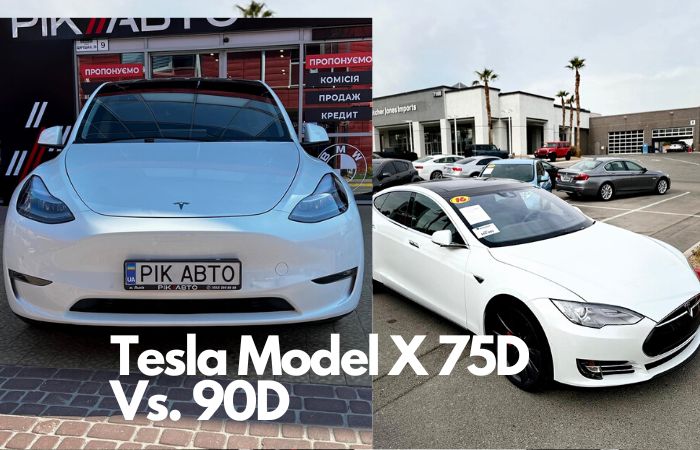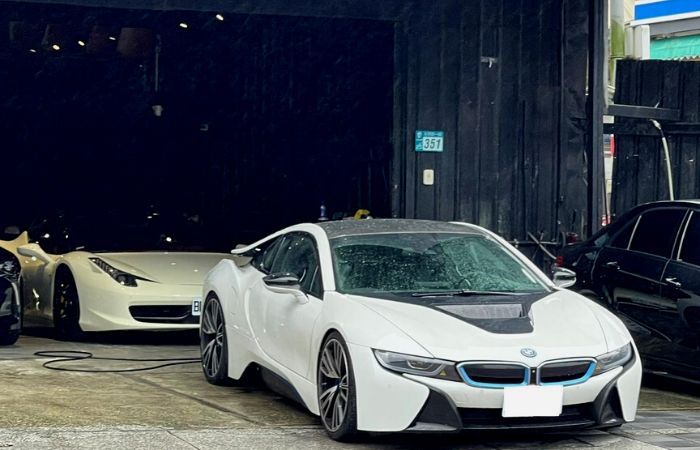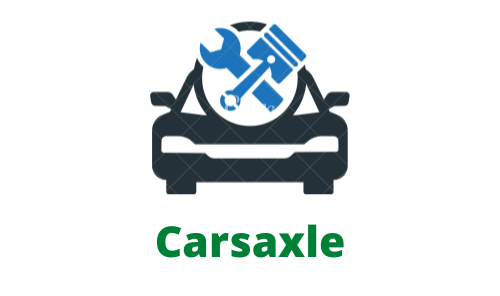Tesla Model X 75D Vs. 90D Vs. 100D, which one is to pick?
The Tesla Model X 75D Vs. 90D Vs. 100D, in this discussion, one will illustrate the differences between the same car with different battery capacities. Though they will be identical in physical appearance, they have many major differences.
Specifically, the three will share differences in performance, fuel efficiency, Power, and driving range. Overall, 75d will be the least, 90d will be the moderate, and 100d will be in the highest position. If one is looking for more details, they may look below.

Tesla Model X 75D Vs 90D Vs 100D
Tesla is well known because of its variation in model and use of a different range of technology. Even though only a few countries in Europe and America is the user of Tesla, the whole world know about it and desire to have one and adore it. That’s all because of the magical features of the car.
Maintaining their legacy of variation, they have added a different type of battery in their models X and S to examine the performance and user experiences. They have launched 75D, 90D, and 100D models in the market. Those three models will provide different user experiences with different price ranges. One can choose their comfort zone in all manners from these three.
Before going any further, one will have to understand the meaning of 75D, 90D, and 100D. It’s simple as water. The letter D in the term represents the dual-motor term. One is in the front, and the other one is in the back. Moreover, the number is the measurement of the battery power in kWh. That means the car will have two motors of 75 kWh for 75D.
So by, 75D, 90D, and 100D mean these three vehicles will get 75kWh, 90 kWh, and 100 kWh output energy from the motors, respectively. Let’s have a look into the differences they share from below.
Table: Tesla Model X 75D Vs 90D Vs 100D
| Tesla 75D | Tesla 90D | Tesla 100D |
| The battery pack capacity of this one is 75 kWh. | The battery pack capacity of this one is 90 kWh. | The battery pack capacity of this one is 100 kWh. |
| The motors will provide 75 kWh energy. | The motors will provide 90 kWh energy. | The motors will provide 100 kWh energy. |
| The engine power of this one is 245 kW. | The engine power of this one is 311 kW. | The engine power of this one is 386 kW. |
| The top speed of this car is 210 km/h. | The top speed of this car is 250 km/h. | The top speed of this car is 250 km/h. |
| This one will provide energy efficiency of 20.8 kWh every 100 km. | This one will provide an energy efficiency of 33 kWh in every 100 km. | This one will provide energy efficiency of 35 kWh every 100 km. |
| Acceleration from 0 to 100 of this one is 5.2 seconds. | Acceleration from 0 to 100 of this one is 5 seconds. | Acceleration from 0 to 100 of this one is 4.9 seconds. |
| The driving range of this one is 417 km. | The driving range of this one is 489 km. | The driving range of this one is 565 km. |
| The range of this vehicle will be less than the other two. | The range of this car will be more than 75D but less than 100D. | 100D will have the maximum range. |
| The charging cost of this car will be less. | The charging cost of this car will be more. | The charging cost of this car will be the most. |
| Suitable for a short trip. | Moderate for a short trip. | It will be extra for a short trip. |
| Not for a long trip. | Moderate for a long trip. | Perfect for a long trip. |
| Starting price of 75D Tesla is $68000. | Starting price of 90D Tesla is $62000. | Starting price of 100D Tesla is $70000. |
Construction
Since three cars belong to the same manufacturer, we can expect the same material and design. Tesla has used mild steel, high-strength steel, ultra-high-strength steel, and aluminum in the main construction of their car. Whichever car one pick, either 75D or 100D, the material of the main construction will be the same.
Moreover, this specific manufacturer has gained worldwide popularity and recognition for its heavy-duty construction. Along with an excellent look, the material used in the car will stay as it is for decades. Also, if one tries to paint it according to their wish, it will be easier because of the smooth material.
Dimension Body style
If one sees the vehicle of 75d, 90d, and 100d, they will know that they are almost identical. One cannot find any differences in those. Because physically, these cars are the same. They only share differences in the internal mechanism. Specifically, three of the car is SUV type which means Sports utility vehicle. These vehicles are for passenger and regular use. One cannot carry a heavy load in these vehicles like a truck.
Moreover, the dimension of these three SUV is the same. They don’t even differ in size by 0.001 inches. Three of the car have a dimension of 196 X 77.3 X 56.9 inches. Therefore, the buyers will not get any differences in the dimension and body style of these cars.
Weight capacity
When buying a truck, people consider the weight capacity the most. However, buying an electric SUV does not involve weight capacity. However, when one is asking about differences in power capacity, the weight capacity does matter because the overall weight will manipulate the Power of the battery.
As for the 75d, 90d, and 100d tesla SUVs, they have a curb weight of 2330kg, 2390kg, and 2459 kg, respectively. Besides, the maximum payload capacity of these three is 573kg, 479k, and 479kg. One will see differences in power efficiency because of these weight differences.
Battery capacity and Speed
The major differences between 75D, 90D, and 100D shares are the battery capacity and speed. Here the 75d has a battery pack capacity of 75kW per hour. Also, this one is capable of producing 75kw Power in every motor.
However, the 90d battery is more powerful than the 75d but less powerful than the 100d. This one is capable of producing 90 kW power in every motor with a 95kw battery pack. On the other hand, 100d is the most powerful one here.
Moreover, 100d has a battery pack capacity of 100kW per hour. Also, this one is capable of producing 100kw Power in every motor. Are the readers looking for maximum Power? Then 100d is their pick. The speed of the car may not be a factor for everyone, but some users prefer speedy rides.
Specifically, the Top speed of this 75d is 210 km/h, and for 90d, it is 250 km/h. However, the top speed of 100d is 250 km/h.In terms of speed, 90d and 100d do not share any differences.
Energy efficiency
Another major area to illustrate logical differences within vehicles, whether it is truck, SUV, or gas-powered, Electric. Well, for the 75d, 90d, and 100d, the most energy-efficient option is the 100d. Because three of the car have the same dimension and almost the same weight capacity. Yet the 100d has the most powerful capacity, which makes it powerful and efficient to use with the same weight capacity.
Specifically, 75d will provide an energy efficiency of 20.8 kWh in every 100 km. Besides, 90d will provide energy efficiency of 33 kWh in every 100 km. However, 100dwill provides energy efficiency of 35 kWh in every 100 km.
Performance
Overall, three of them will provide excellent performance in their range and favorable circumstances. People measure the performance of the car in different ways and terms. Specially, we can discuss the acceleration of these three cars to get an idea about their performance. Well, acceleration from 0 to 100 of 75d is 5.2 seconds, and it’s 5 seconds for 90d. On the contrary, acceleration from 0 to 100 of 100d is 4.9 seconds.
Moreover, the driving range of the cars is another area we can decide what performance we want to form our vehicles. One will get a driving range of 417 km, 489 km, and 565 km, respectively, from these three cars of Tesla.
Specifically speaking, the 75d vehicle option of Tesla is for a short-distance ride since it will not cover so much mileage. One cannot go long-distance with this car. As for the 90d option, it will provide a moderate amount of performance on mileage. However, for the best and longest performance on the road, one must choose 100d.
Price and warranty
When buying any automobile, price, and warranty are big factors people look for choose. Well, with these three options Tesla have a huge price difference. Thousands of dollars distinguish them from each other.
Specifically, the 75D will cost $68,000 while the 90d will cost $62,000 meanwhile 100d will be around $70,000. Moreover, buyers will get 4 Years or 50,000 Miles basic warranty with Tesla. It will be applicable for these three vehicles.
Did Tesla stop manufacturing 75d vehicles?
Sadly, it is true that Tesla no longer will take orders or manufacture their 75d vehicle. Elon Musk, the CEO of Tesla has confirmed this on his Twitter account. As an explanation, they have said that the performance of this one is close to 100d but has a high price range, that’s why. Well, that makes sense that the car is pricy compared to its performance.
If one still wants to buy the 75d version, they will have to choose from2015 to 2018 manufacturing year. After that, Tesla has not updated anything in this car version.
What will be the charging cost for 75d, 90d, and 100d?
The charging cost of any tesla vehicle depends on some factors. Mainly the state law of per kW price and the charger option. The regular charger of Tesla will charge so much different than the supercharger. Normally, the regular charger costs less but takes so much time. However, the supercharger takes a few minutes but costs more than the regular charger.
| Consumed Power (kWh) | Cost of charging with a normal charger ($0.13 per kWh) | Cost of charging with a supercharger($0.25 per kWh) |
| 75 | $9.75 | $18.75 |
| 95 | $12.35 | $23.75 |
| 100 | $13 | $25 |

How much time will it take to charge 75d, 90d, and 100d tesla vehicles?
Overall charging time always depends on the battery capacity and the type of charger. As for 75d or 75kW, 90d or 90 kW, and 100d or 100 kW vehicles. With the three-level of charging which are 110v, 220v, and 480v, the time will vary.
We can categorize the charging level on the regular and superchargers. Specifically, a regular charger will take 7 to 8 hours to charge 75 kW fully, and it will take more than 10 hours for the 90 kW option. However, with a regular charger, the 100 kW vehicle will take 12 to 13 hours for a full charge.
On the other hand, a supercharger will take a few minutes to recharge these three options. Specifically, the 75 kW will take not more than 15 minutes, and the 90 kW option will not take more than 25 minutes. As for the 100 kW option, it will take around 30 to 40 minutes.
Conclusion
Finally, one will need to know that Tesla will no longer manufacture 75d and maybe 90d too in the future. Because of the less mileage, they cover, and because Tesla wants more for their consumer, they have to decide to increase the driving range. However, people can still get the 2015 to 2018 version.
As for the discussion of the tesla model x 75d vs. 90d vs. 100d, three will be the winner if different circumstances. If one is looking for a lower-range car, 75d is the pick. Besides, for more mileage, the last option is the best. Hopefully, one will be able to pick the right one for themselves after reading this article.
